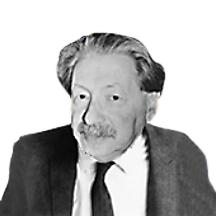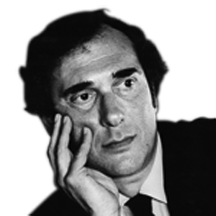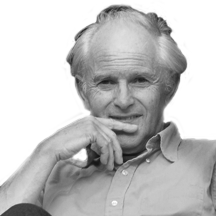Found 4 Results

Bohr Niels
Niels Bohr was born in Copenhagen. His father, Christian Bohr, was a professor of physiology. His mother, Ellen Adler, was the daughter of a prominent Jewish family in Denmark. Bohr distinguished himself at the outset of his career and in 1907 he was awarded a gold medal by the Danish Royal Academy of Science for his Bachelor of Arts project.
Upon receiving his doctorate degree, Bohr went to England to study at Cambridge with J.J. Thomson, the discoverer of the electron. However, he became interested in the research of Ernest Rutherford on the structure of the atom and went to Manchester to work with him.
In 1913, he published his own model of the atom, a revolutionary theory that served as a cornerstone for twentieth century physics and earned him the Nobel Prize.
In 1916, he was appointed professor at the University of Copenhagen, and in 1920, he established the Institute of Theoretical Physics and was its director until his death.
Niels Bohr was likable and well rounded; in addition to his scientific work, he devoted his time to sport and even played on a football team.
In 1943, during the German occupation of Denmark, he fled to Sweden, from there to England and, later, to the U.S. where he participated in “the Manhattan Project” for the development and production of the atomic bomb. After the war, he did his utmost to prevent the proliferation of atomic weapons.
Niels Bohr died of a stroke on November 18, 1962, in Copenhagen, the city of his birth.
Niels Bohr was awarded the 1922 Nobel Prize in Physics, “for his contribution in research into the structure of the atom and the radiation it emits. His most outstanding achievement was the model of the structure of the atom that he published in 1913. This model integrated the quantum theory, still in its infancy, with atomic physics and provided answers to key questions puzzling physicists of that period.
Upon discovering that the atom has a positively charged nucleus and negatively charged electrons, physicists theorized that electrons circle about the nucleus like planets about the sun. According to the laws of classical physics, they would then lose energy and enter a spiral course which would consequently cause them to collapse into the nucleus. However, electrons are never found in the vicinity of the nucleus.
Furthermore, an examination of radiation released by atoms, particularly the hydrogen atom, reveals that this radiation is not emitted at all frequencies. Classical physics cannot explain the existence of “allowed” frequencies and “forbidden” ones.
To resolve this contradiction, Bohr proposed a solution deviating from classical physics: he determined that electrons circle about the nucleus only in certain circular “allowed” orbits, each one characterized by a particular value of energy. Electron do not give off energy while they are orbiting around the nucleus. When they pass from an orbit of higher energy to one of lower energy, However, they emit the difference in energy in the form of radiation. The radiation is thus released in units of energy corresponding to the differences in energy of the various orbits and is limited only to these units.
Bohr explained that radiation frequencies must correspond to the units of energy emitted from the electron. This idea corresponds to the theory that radiation is emitted in individual units of energy called “quanta”.
The Bohr model led to the development of quantum mechanics, one of the major scientific achievement of modern physics which explain a lot of phenomenons.

Chain Ernst
Chain was born in Berlin in 1906. In his youth, he aspired to become a pianist, but focused on the studies of chemistry and obtained his PH.D. degree at the age of 21. When the Nazi regime came to power, he emigrated to England, at first to Cambridge University and later on to Oxford University. There he joined Howard Florey’s department, where he engaged in the research of the chemical structure of penicillin.
In 1945, Ernst Chain, Howard Florey and Alexander Fleming, who was considered the first to discover penicillin, were awarded the Nobel Prize in Physiology or Medicine “for the discovery of penicillin and its curative effect on various infectious diseases”.
Following biological tests made on penicillin, it was discovered that it effect a large variety of microbes without damaging the organism itself. It was further discovered that this substance is ten times more powerful in destroying microbes than sulfur drugs, which had been used until that time.
In 1941, following the success of experiments conducted on animals, and after Chain successfully improved the purification process of the substance, bringing it to a much higher purity grade, experiments on human beings began.
Chain and his colleagues made a crucial contribution to humanity in its struggle against infectious diseases. Their triumph can be measured by the saving of millions of lives.
Ernst Chain died in 1979.

Harold Pinter
Harold Pinter’s ancestors came to England from eastern Europe, possibly descendants of the Portuguese Pinto family. He was born in East London in 1930 and was very talented as a child. He was a gifted runner, a promising cricket player and a curious student who admired English and Russian literature.
In 1948 he joined the theater academy of London and played in hundreds of plays. At that period he also directed and played in radio and television programs. However he was best known for his play writing, producing witty dialogues, absurd plots and unique style, in plays such as The Birthday Party, The Room and Betrayal – plays that left the audience speechless. In 2005 his outstanding talent was recognized and he was awarded the literature Nobel Prize, joining the Jewish literary hall of fame.

Harry Kroto
25 years ago, Harry Kroto discovered a carbon structure he chose to name buckyball, because of its soccer ball shape. However the official name was Fullerene, in honor of the gigantic domes planned by Buckminster Fuller.
Buckminsterfullerene (or buckyball) is a spherical Fullerene molecule with the formula C60. It has a cage-like fused-ring structure which resembles a soccer ball, made of twenty hexagons and twelve pentagons, with a carbon atom at each vertex of each polygon and a bond along each polygon edge.
Buckyball has become a star overnight – it is the logo of modern chemistry, and was even picked as the national molecule of the state of Texas.
Due to its unique features, its strong and stable structure, and the high conductivity, it has become the star of nanotechnology.
In the near future we may enjoy extremely light computers made of fullerene, extra strong batteries, nanorobots to be inserted into the body and fight diseased and maybe even an elevator from earth to space bases using fullerene cables.

free text
Select a Nobel category:
- Chemistry
- Economics
- Literature
- Medicine
- Peace
- Physics
Select first letter of winner's name:
- A
- B
- C
- D
- E
- F
- G
- H
- I
- J
- K
- L
- M
- N
- O
- P
- Q
- R
- S
- T
- U
- V
- W
- X
- Y
- Z
Search Results
Found 0 Results
No search results

region on map
